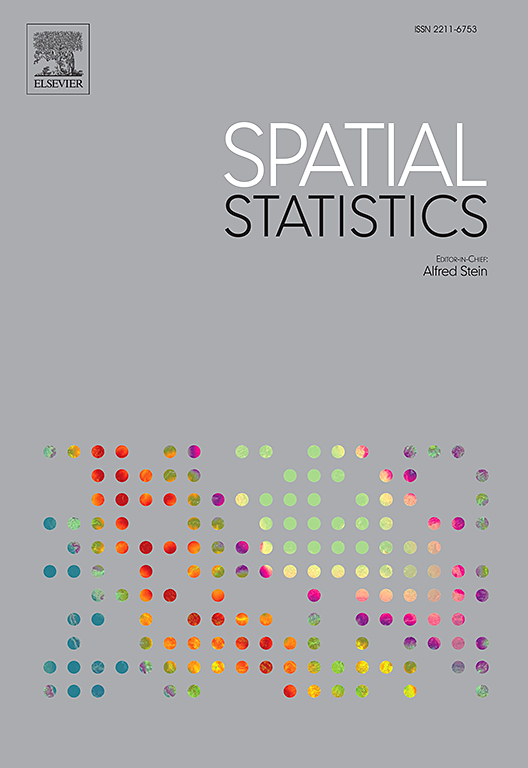基于隐高斯模型和清查数据的森林属性时空预测
IF 2.5
2区 数学
Q3 GEOSCIENCES, MULTIDISCIPLINARY
引用次数: 0
摘要
美国农业部森林清查与分析(FIA)项目通过一个永久性田间小区网络为美国进行全国森林清查。FIA通过基于设计的推断,假设一个固定的人口和野外地块位置的概率样本,对地块测量的森林变量的面积平均值和总量进行估计。固定种群假设和FIA抽样方案的特征使得使用基于设计的推理来估计森林变量随时间的变化变得困难。我们提出基于高斯过程的时空模型作为森林清查数据的灵活工具,能够推断森林变量及其在任意时空域的变化。研究表明,控制潜在高斯过程的协方差函数有助于解释多尺度的变化,将空间局部变化与生态系统尺度变化分离开来。我们展示了一个森林生物量密度模型,推断了两个美国国家森林20年来的生物量变化。本文章由计算机程序翻译,如有差异,请以英文原文为准。
Spatial–temporal prediction of forest attributes using latent Gaussian models and inventory data
The USDA Forest Inventory and Analysis (FIA) program conducts a national forest inventory for the United States through a network of permanent field plots. FIA produces estimates of area averages and totals for plot-measured forest variables through design-based inference, assuming a fixed population and a probability sample of field plot locations. The fixed-population assumption and characteristics of the FIA sampling scheme make it difficult to estimate change in forest variables over time using design-based inference. We propose spatial–temporal models based on Gaussian processes as a flexible tool for forest inventory data, capable of inferring forest variables and change thereof over arbitrary spatial and temporal domains. It is shown to be beneficial for the covariance function governing the latent Gaussian process to account for variation at multiple scales, separating spatially local variation from ecosystem-scale variation. We demonstrate a model for forest biomass density, inferring 20 years of biomass change within two US National Forests.
求助全文
通过发布文献求助,成功后即可免费获取论文全文。
去求助
来源期刊

Spatial Statistics
GEOSCIENCES, MULTIDISCIPLINARY-MATHEMATICS, INTERDISCIPLINARY APPLICATIONS
CiteScore
4.00
自引率
21.70%
发文量
89
审稿时长
55 days
期刊介绍:
Spatial Statistics publishes articles on the theory and application of spatial and spatio-temporal statistics. It favours manuscripts that present theory generated by new applications, or in which new theory is applied to an important practical case. A purely theoretical study will only rarely be accepted. Pure case studies without methodological development are not acceptable for publication.
Spatial statistics concerns the quantitative analysis of spatial and spatio-temporal data, including their statistical dependencies, accuracy and uncertainties. Methodology for spatial statistics is typically found in probability theory, stochastic modelling and mathematical statistics as well as in information science. Spatial statistics is used in mapping, assessing spatial data quality, sampling design optimisation, modelling of dependence structures, and drawing of valid inference from a limited set of spatio-temporal data.
 求助内容:
求助内容: 应助结果提醒方式:
应助结果提醒方式:


